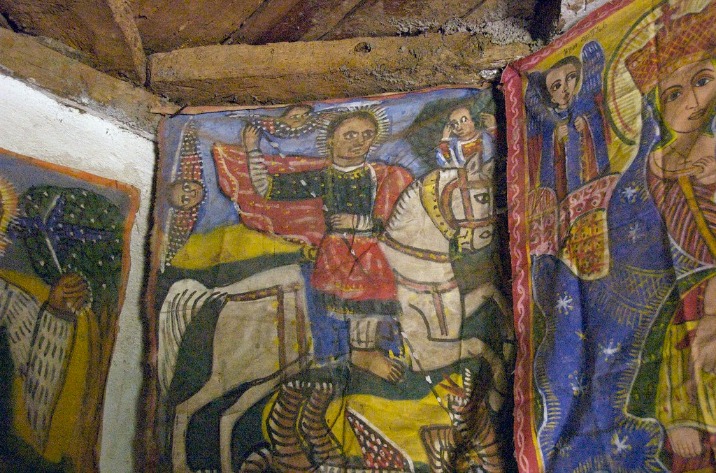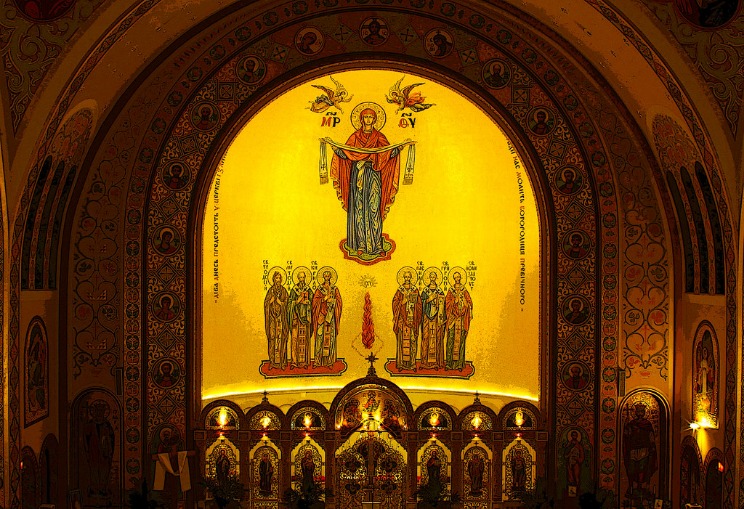Historical Background of the Church of St. George
The Church of St. George in Ethiopia is one of the most revered religious sites with a rich historical background. Located in the city of Lalibela, this rock-hewn church is part of a larger complex of monolithic structures that date back to the 12th century. Built during the reign of King Lalibela, the church exemplifies the spiritual and architectural ingenuity of medieval Ethiopia and holds significant cultural and religious importance for Ethiopian Orthodox Christians.
Origins and Founding
The Church of St. George in Ethiopia, also known as theGiorgis Church, holds a significant place in the country’s religious and cultural history. It is believed to have origins dating back to the 4th century, during the early spread of Christianity in Ethiopia. Legend attributes its founding to the Aksumite King Ezana, who converted to Christianity and established the church as a symbol of the new faith in the region.
The church was reportedly constructed on the site of a miraculous legend involving the Archangel Michael, which inspired King Ezana to build a sacred space dedicated to St. George, the warrior saint. Over centuries, it has become an important pilgrimage site and a spiritual center for Ethiopian Orthodox Christians. Its historical significance is further cemented by its association with the Ethiopian Orthodox Tewahedo Church, which has maintained its traditions and architecture through the centuries.
Historical Significance in Ethiopian Christianity
The Church of St. George, also known as Debre Genet, holds a prominent place in Ethiopian history and religious tradition. Situated in Lalibela, Ethiopia, it was carved directly out of volcanic rock in the 12th century during the reign of King Lalibela, who sought to create a New Jerusalem. This architectural marvel reflects the high level of craftsmanship and devotion of the Ethiopian Orthodox Tewahedo Church and stands as a testament to the country’s rich Christian heritage.
The Church of St. George is historically significant as it exemplifies Ethiopia’s early adoption and deep roots in Christianity, which dates back to the 4th century. It has served as a spiritual center for centuries, hosting religious ceremonies, pilgrimages, and community gatherings. The structure’s unique cross-shaped design and the rock-hewn construction symbolize Ethiopia’s enduring Christian identity and resilience through centuries of religious and political changes.
As one of the most iconic monuments in Ethiopia, the Church of St. George is an enduring symbol of Ethiopian Christian art, history, and faith. It continues to be a vital pilgrimage site, embodying the religious fervor and cultural pride of the Ethiopian Orthodox community. Its historical significance extends beyond religious purposes, representing Ethiopia’s national identity and artistic ingenuity.
Key Events and Developments Over the Centuries
The Church of St. George in Ethiopia, also known as the Church of Bet Giyorgis, is one of the most iconic and historic Christian sites in the country. It is believed to have been built in the 12th century during the Zagwe dynasty, serving as a significant religious and cultural center. Over centuries, the church has witnessed numerous religious events, restorations, and adaptations, reflecting its enduring importance to Ethiopian Orthodox Christians.
Throughout its history, the Church of St. George has been a symbol of Ethiopian Christianity’s resilience and continuity. In the 14th century, the church gained prominence as a pilgrimage site, drawing visitors from across the region. During the Axumite period, Ethiopia’s Christian empire was at its height, and churches like St. George played a vital role in religious life and political authority.
In the subsequent centuries, the church survived various invasions, political upheavals, and natural calamities. Notably, during the Italian occupation in the mid-20th century, efforts to restore and preserve the church intensified. Its unique rock-hewn architecture, carved directly into the ground, exemplifies the advanced engineering and religious devotion of early Ethiopian Christians.
In recent decades, the Church of St. George has been recognized as a UNESCO World Heritage Site, highlighting its significance and ensuring preservation for future generations. Today, it continues to serve as an active place of worship, a symbol of Ethiopian heritage, and a testament to the country’s rich religious history over the centuries.
Architectural Features and Design
The Church of St. George in Ethiopia showcases a remarkable blend of architectural features and intricate design that reflect centuries of cultural and religious significance. Renowned for its unique construction and artistic details, the church stands as a testament to Ethiopia’s rich heritage and centuries-old Christian tradition. Its architectural style combines traditional Ethiopian Christian elements with innovative design, creating a sacred space that is both historically meaningful and visually stunning.
Structural Layout and Construction Materials
The Church of St. George in Ethiopia is renowned for its unique architectural features and design that reflect a blend of ancient Ethiopian ecclesiastical tradition and distinctive artistic elements. Its structure often incorporates a circular or cruciform layout, with a prominent central nave and surrounding chapels, creating a harmonious and sacred space for worship. The architectural style emphasizes intricate carvings, vibrant frescoes, and symbolic iconography that depict biblical stories and saints, enhancing the spiritual atmosphere.
Structurally, the Church of St. George is typically built using locally sourced volcanic stone and wood, which provide durability and resilience against environmental elements. The construction often involves a combination of traditional building techniques passed down through generations, utilizing lime plaster and architectural motifs that are characteristic of Ethiopian Orthodox architecture. The roof may feature a conical or domed design, often covered with wooden shingles or metal sheets, contributing to the church’s iconic silhouette.
In terms of construction materials, natural and sustainable resources play a crucial role. The walls are often constructed with stone blocks, carefully fitted and reinforced with mortar, ensuring strength and stability. Decorative elements are made from wood and painted plaster, showcasing craftsmanship and historical artistry. These materials not only serve structural purposes but also embody the cultural heritage and spiritual symbolism of the Ethiopian Orthodox Church, making the Church of St. George a remarkable example of religious architecture.
Distinctive Religious and Cultural Symbols
The Church of St. George in Ethiopia is renowned for its unique architectural features and symbolic design elements that reflect the rich religious and cultural heritage of Ethiopian Orthodox Christianity. Its structure is characterized by a rock-hewn design, carved directly into the hillside, which gives it a distinctive and enduring appearance. The church’s interior is adorned with elaborate frescoes, iconography, and religious symbols that depict biblical events and saints, serving as important tools for spiritual reflection and worship. Several cultural symbols, such as the cross motifs and traditional Ethiopian artistic styles, are prominently integrated into the architecture, emphasizing the church’s significance as a religious and cultural landmark. These elements together create a sacred space deeply rooted in Ethiopian identity, embodying centuries of religious devotion and artistic expression.
Interior Artwork and Iconography
The Church of St. George in Ethiopia is renowned for its unique architectural features and intricate interior artwork that reflect the rich cultural and religious heritage of the region. Its design incorporates traditional Ethiopian Christian architecture, characterized by a cruciform structure with a central domed nave and multiple chapels. The interior is adorned with vibrant frescoes, detailed iconography, and elaborate murals depicting biblical scenes, saints, and religious symbols that serve as theological narratives and educational tools for worshippers. These artworks are often created using natural pigments and techniques passed down through generations, contributing to the church’s spiritual ambiance. The iconography prominently features Ethiopian saints, angels, and depictions of Christ, emphasizing the church’s role as a sacred space for worship and pilgrimage. Overall, the architectural and artistic elements of the Church of St. George exemplify Ethiopia’s unique blend of religious devotion and artistic expression, making it a significant cultural and spiritual monument.
Religious Practices and Celebrations
The Church of St. George in Ethiopia is a prominent symbol of faith and cultural heritage, celebrated through various religious practices and vibrant festivities. These traditions play a vital role in shaping the spiritual and social lives of the Ethiopian Orthodox Christian community. Daily prayers, sacred rituals, and colorful celebrations like Timkat highlight the deep-rooted religious devotion and cultural identity associated with this historic church.
Liturgical Services and Rites
The Church of St. George in Ethiopia is renowned for its rich religious practices and vibrant celebrations that reflect the deep spiritual heritage of Ethiopian Christianity. Throughout the year, the church hosts numerous liturgical services and rites that are integral to the Ethiopian Orthodox Tewahedo Church, fostering community and devotion among its followers. Central to its religious calendar is the celebration of the Feast of St. George, marked by elaborate processions, prayers, fasting, and communal gatherings that honor the saint’s significance. These liturgical services typically involve ancient hymns, incense, and rituals performed in the church’s sanctuaries and outdoor settings, creating a profound spiritual atmosphere. The rites performed during these ceremonies include baptisms, Holy Communion, and various penitential practices, all conducted with strict adherence to traditional procedures. The Church of St. George thus serves as a vital spiritual center, embodying the enduring religious traditions and cultural identity of Ethiopian Orthodox Christianity.
Major Festivals and Observances
The Church of St. George in Ethiopia is renowned for its rich religious practices and vibrant celebrations that reflect the deep faith and cultural heritage of the Ethiopian Orthodox Tewahedo Church. Devotees participate in daily prayers, fasting periods, and elaborate liturgical ceremonies that bring the community together in worship. Major festivals such as Meskel, which commemorates the discovery of the True Cross, and Timket, the Epiphany celebration, are marked with processions, colorful rituals, and church services. These celebrations are characterized by their profound spiritual significance, traditional music, and communal feasts, highlighting Ethiopia’s unique religious identity and the enduring legacy of St. George’s veneration in Ethiopian Christianity.
Role of Pilgrimage and Devotees
The Church of St. George in Ethiopia is a significant religious site that embodies deep spiritual practices and vibrant celebrations. Devotees engage in elaborate ceremonies and rituals that honor their faith and history, fostering a strong sense of community and devotion. Religious festivals, such as the Feast of St. George, are marked with processions, prayers, and communal feasts, reflecting the importance of tradition in Ethiopian Christianity. Pilgrimage plays a vital role in the spiritual life of followers, with many journeying long distances to visit the church and seek divine blessings or fulfill vows. Pilgrims and devotees often participate in fasting, prayer, and special liturgies, demonstrating their piety and devotion. These practices reinforce the religious identity of the Ethiopian Orthodox Church and serve as avenues for spiritual renewal and cultural preservation.
Art and Cultural Heritage
The Church of St. George in Ethiopia is a remarkable symbol of the country’s rich artistic and cultural heritage. Renowned for its stunning architecture, intricate iconography, and historical significance, this sacred site offers invaluable insights into Ethiopia’s religious traditions and artistic achievements. As a center of spiritual life and cultural identity, the church continues to inspire visitors and preserve the nation’s historical legacy through its artistry and religious significance.
Historical Murals and Frescoes
The Church of St. George in Ethiopia is renowned not only for its religious significance but also for its stunning historic murals and frescoes that adorn its interior walls. These artworks vividly depict biblical stories, saints, and religious themes, serving as a visual narrative of Ethiopia’s rich Christian heritage. The murals, created over centuries, reflect a unique blend of Ethiopian Orthodox Christian art and traditional Ethiopian cultural elements, making them invaluable artifacts of both religious practice and artistic expression. Preserved through centuries of religious devotion, these frescoes provide insight into Ethiopia’s history, religious beliefs, and artistic traditions.
Relics and Sacred Items
The Church of St. George in Ethiopia is a remarkable example of religious art and cultural heritage that reflects the nation’s deep Christian roots. Carved out of solid rock, this historic church is renowned for its vibrant frescoes, intricate religious iconography, and well-preserved relics that date back centuries. These sacred items are considered invaluable relics that showcase the artistic and spiritual devotion of the Ethiopian Orthodox Tewahedo Church. The church’s relics and sacred artifacts are not only objects of veneration but also serve as important cultural relics that preserve the rich history and traditions of Ethiopia. Visitors and pilgrims alike cherish these relics as they represent a tangible connection to the country’s religious heritage and artistic achievement.
Preservation and Restoration Efforts
The Church of St. George in Ethiopia is a remarkable example of religious architecture and cultural heritage, representing centuries of Ethiopian history and faith. Preservation and restoration efforts are vital to maintain its structural integrity and historical significance amid environmental and human challenges. Local communities, government agencies, and international organizations collaborate to fund restoration projects, employing traditional techniques alongside modern conservation methods. These initiatives aim to protect the church’s unique frescoes, carvings, and ancient construction materials from deterioration. Additionally, raising awareness about the importance of Ethiopia’s cultural heritage fosters a collective responsibility to safeguard such sites for future generations. Preserving the Church of St. George not only honors Ethiopia’s religious heritage but also enhances cultural tourism and national identity. Continuous efforts are necessary to ensure this iconic symbol of Ethiopian Christianity remains intact and accessible for generations to come.

Role in Community and Society
The Church of St. George in Ethiopia holds a vital role in the community and society as a symbol of faith, cultural heritage, and unity. It serves not only as a place of worship but also as a community hub where people gather for spiritual growth, social support, and cultural celebrations. Its presence strengthens community bonds and preserves important traditions that are integral to Ethiopian identity.
Religious Education and Scripture Dissemination
The Church of St. George in Ethiopia plays a vital role in the community and society by serving as a spiritual center, fostering unity, and promoting moral values among its members. It provides a space for worship, communal activities, and social support, strengthening the fabric of local communities. The church is also instrumental in encouraging charitable work and social justice, contributing positively to societal development.
In religious education, the Church of St. George emphasizes the teaching of Christian principles, scriptures, and traditions to both young and old members. It offers catechism classes, sermons, and religious studies that deepen believers’ understanding of their faith. This education helps individuals live according to Christian values and enhances their spiritual growth.
Regarding scripture dissemination, the Church of St. George actively promotes the reading and understanding of the Bible and other religious texts. It often organizes Bible study groups, distributes religious literature, and utilizes various media to ensure that scripture reaches a broad audience. This effort supports the church’s mission to enlighten its congregation and reinforce the teachings of Christianity throughout Ethiopia.
Social Services and Aid
The Church of St. George in Ethiopia plays a vital role in both the community and society by serving as a spiritual center and cultural hub. It offers a place for worship, religious ceremonies, and community gatherings that strengthen social bonds among residents. Additionally, the church actively participates in social services and aid, providing support to those in need through charitable activities, humanitarian aid, and programs aimed at improving education and health. Its influence extends beyond spiritual guidance, fostering a sense of unity, compassion, and resilience within the Ethiopian community.
Interfaith and Community Engagement
The Church of St. George in Ethiopia holds a significant role in both community and society, serving as a central institution for spiritual guidance, cultural preservation, and social cohesion. It fosters a sense of belonging among congregants, encouraging collective participation in religious and social activities that strengthen community bonds. Through its teachings and community programs, it promotes values of compassion, unity, and mutual support, impacting societal well-being positively.
Interfaith and community engagement are vital aspects of the church’s mission, as it actively participates in fostering dialogue and understanding among different religious groups. The Church of St. George emphasizes tolerance, respect, and cooperation, often hosting interfaith events and community service initiatives that bridge divides and promote peace. Its commitment to inclusivity and outreach exemplifies its dedication to building a harmonious and integrated society in Ethiopia.
Tourism and Cultural Significance
The Church of St. George in Ethiopia stands as a remarkable symbol of cultural heritage and religious significance. As an important pilgrimage site and architectural marvel, it reflects the rich history and spiritual traditions of Ethiopia. Visitors are drawn to its unique design and the deep cultural meanings embedded within its walls, making it a vital part of Ethiopia’s tourism and cultural identity.
Visitor Information and Accessibility
The Church of St. George in Ethiopia is a remarkable historical and religious site that holds immense cultural significance for the Ethiopian Orthodox Tewahedo Church and the local community. Situated in Lalibela, this rock-hewn church is renowned for its unique construction, carved directly into the volcanic rock, making it a masterpieces of medieval Ethiopian architecture. It attracts pilgrims and tourists from around the world who come to admire its spiritual and historical importance.
Visitors can explore the church’s intricate design, including its cross-shaped structure and stunning interior murals that depict biblical scenes. The site is especially vibrant during religious festivals such as Timket (Epiphany) and Ethiopian Christmas, where thousands gather to participate in traditional ceremonies and celebrations, experiencing Ethiopia’s rich spiritual heritage firsthand.
Access to the Church of St. George is facilitated by well-maintained roads and local transportation options from Lalibela town, which serves as the primary hub for visitors. The site is generally accessible to hikers and tourists, though visitors should be prepared for some uneven paths and steps due to its historic rocky setting. Local guides are available to assist visitors in understanding the significance of the church and to ensure a safe, enriching experience. Overall, the site offers a profound glimpse into Ethiopia’s religious history and cultural identity, welcoming visitors of all backgrounds to explore its ancient splendor.
Impact on Ethiopian Cultural Identity
The Church of St. George in Ethiopia holds a profound cultural and religious significance, serving as a symbol of Ethiopian heritage and Christian tradition. As a historic Ethiopian Orthodox Tewahedo Church, it attracts pilgrims and tourists from around the world, fostering a deep appreciation of Ethiopia’s unique cultural identity. This site not only embodies religious devotion but also plays a vital role in preserving indigenous art, architecture, and rituals that are integral to Ethiopian history. The influx of visitors helps promote cultural exchange, enhancing understanding and respect for Ethiopia’s rich heritage. Moreover, the church’s prominence strengthens national pride and cultural continuity, ensuring that traditional practices and beliefs are sustained across generations. Overall, the Church of St. George significantly influences Ethiopia’s cultural landscape, blending spiritual significance with the broader narrative of Ethiopian identity and history.
Guidelines for Respectful Tourism
The Church of St. George in Ethiopia is a renowned historic site that draws numerous visitors from around the world. As a symbol of Ethiopian Christianity and cultural heritage, it holds both spiritual and cultural significance. Visitors should approach the site with respect and reverence, recognizing its importance to local traditions and religious practices. When touring the church, it is essential to adhere to guidelines such as dressing modestly, speaking softly, and asking for permission before taking photographs. Supporting local communities by purchasing authentic crafts and participating in established tours can enhance the sustainable development of the site. By practicing respectful tourism, visitors contribute to the preservation of Ethiopia’s rich cultural legacy while ensuring a meaningful experience for all involved.





0 Comments